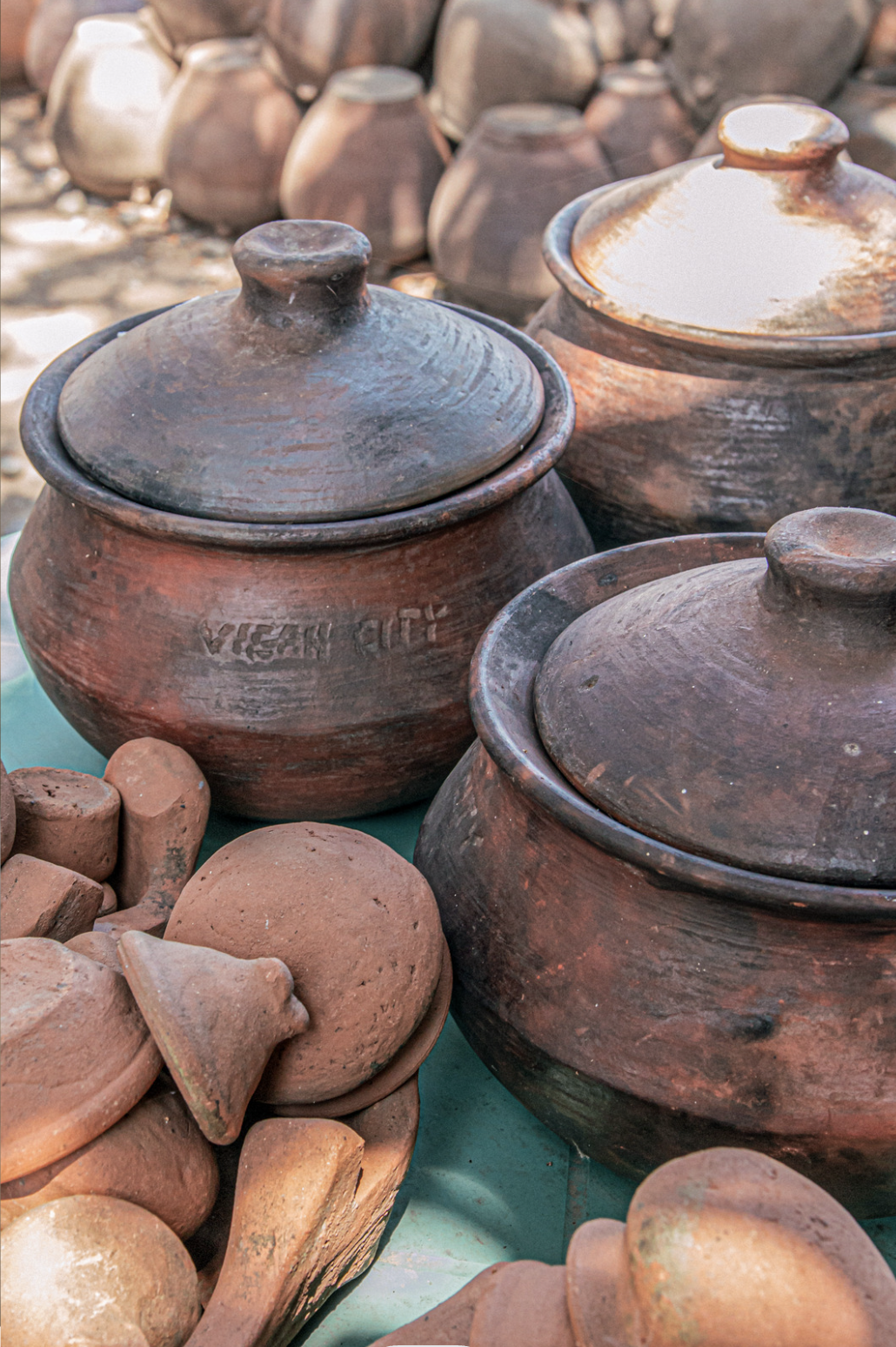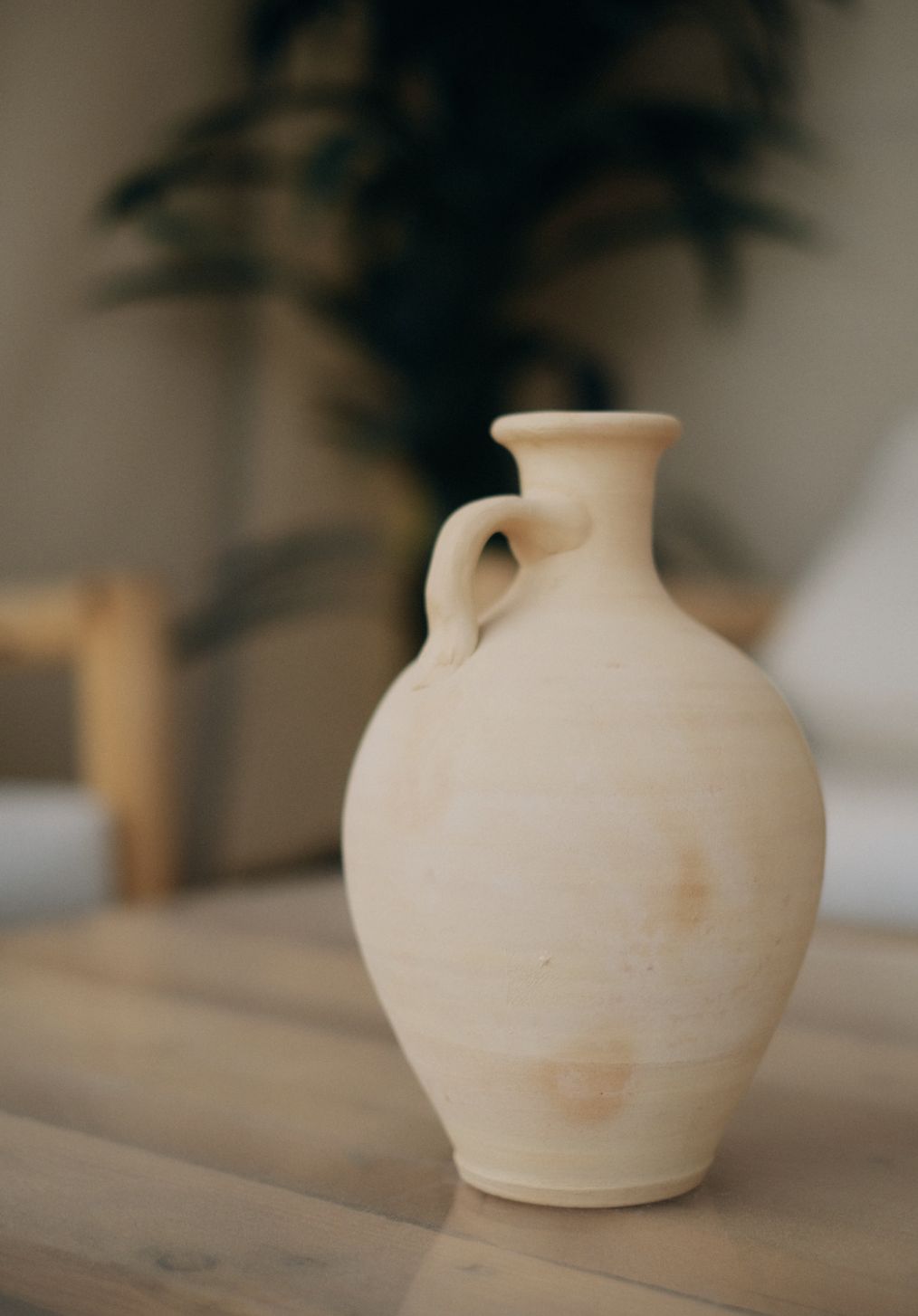Clay for ceramics - guidance and availability
What clay should I use?
|
Choosing the right type of clay depends on the pottery technique you’re using and the desired finish and the durability of the final product.
Here’s an overview of the main types of potters' clay:
|
It’s also important to match the clay body with the appropriate glaze to ensure they mature at the same temperature and have compatible thermal expansion characteristics.
After selecting any type of clay, it's important to refer to the manufacturer's website or contact them directly for comprehensive details about the clay's properties. This includes information on shrinkage and absorption rates, which are crucial for understanding how the clay will behave from wet to fired state and its suitability for various applications. Additionally, manufacturers can provide insights into the optimal firing range, glaze compatibility, and specific use recommendations for their clay bodies.
After selecting any type of clay, it's important to refer to the manufacturer's website or contact them directly for comprehensive details about the clay's properties. This includes information on shrinkage and absorption rates, which are crucial for understanding how the clay will behave from wet to fired state and its suitability for various applications. Additionally, manufacturers can provide insights into the optimal firing range, glaze compatibility, and specific use recommendations for their clay bodies.
What are the different ceramic firing temperatures?
The temperature at which pottery is fired significantly affects its strength, durability, and porosity. Pottery firing temperatures are categorised into several ranges, each suited to different types of clay and desired finishes. These ranges are commonly referred to in terms of cones, which are pyrometric devices used to measure heatwork (the effect of both time and temperature) inside a kiln. Here’s an overview of the primary firing ranges:
Low Fire
Mid Range
High Fire
Low Fire
- Temperature Range: Approximately 1000°C to 1200°C
- Cone Range: 022 to 04
- Characteristics: Earthenware, Low fire pottery, including terracotta is typically fired within this range. The result is a porous body that is colorful and ideal for decorative pieces. Glazes are often applied to make the ware waterproof.
- Uses: Ideal for bright, decorative pieces, tiles, and low-duty ceramic items.
Mid Range
- Temperature Range: Approximately 1200°C to 1260°C
- Cone Range: 5 to 7
- Characteristics: Mid-range firing is commonly used for stoneware, which is more durable and less porous than low-fired ceramics. This range is popular for functional pottery in electric and gas kilns because it can produce strong, vitrified, and often dishwasher-safe ceramics without reaching the high temperatures required for porcelain.
- Uses: Commonly used for functional dinnerware, kitchenware, and pottery that requires a balance between strength and ease of firing.
High Fire
- Temperature Range: Approximately 1260°C to 1400°C
- Cone Range: 8 to 10
- Characteristics: High firing temperatures are suitable for porcelain and some types of stoneware clay, creating very dense and non-porous ceramics. High fire ware is very durable and resistant to scratching and thermal shock.
- Uses: Ideal for fine porcelain ware, high-quality stoneware, and ceramics requiring maximum durability.
What is grog and how can I tell how much grog there is in the clay?
Grog is essentially pre-fired ceramic material that has been ground into particles and added back into clay bodies. It's a crucial component in many types of clay, particularly those used for sculptural work and pieces requiring enhanced durability and resistance to thermal shock. Grog serves several important purposes in pottery, influencing the texture, workability, and final characteristics of the clay.
The Mesh and Millimetre System:
The size of grog particles is typically defined by a mesh number or in millimetres (mm). This sizing system helps potters choose the right type of grog for their specific needs.
Why Grog is Added:
Choosing the right grog size (either in mesh or mm) depends on the specific demands of the pottery project, including the desired texture, the form's structural needs, and the firing method.
In wheel throwing, potters usually prefer clay with less or no grog because it's smoother. This smoothness makes the clay sometimes easier to shape on the wheel and nicer to handle, avoiding roughness on the hands. Without grog, it's also easier to make detailed designs and thin walls. When it comes time to trim or adjust the shape, smoother clay is simpler to work with and decorations on smooth surfaces show off details more clearly.
The size of grog particles is typically defined by a mesh number or in millimetres (mm). This sizing system helps potters choose the right type of grog for their specific needs.
- Mesh Number: The mesh system is a standard sizing method used to describe the size of particle granules. The mesh number refers to the number of openings in a linear inch of the screen or sieve through which the material is passed. A higher mesh number means smaller particles because there are more openings for the material to pass through per inch. For example, a #200 mesh grog has finer particles than a #30 mesh grog.
When a clay type is described with two mesh sizes, one indicates the clay body and the other the grog particles. - Millimetre (mm) Size: The mm size directly measures the diameter of the grog particles. This measurement gives a clear and direct understanding of the particle size, such as 0.5mm, 1mm, or 2mm grog. This system is straightforward and indicates the maximum size of the particles within the grog.
The percentage (%) associated with grog size in clay refers to the proportion of grog within the clay body by weight. This percentage indicates how much of the total mixture is made up of grog compared to the clay itself. For example, if a clay body is described as having 20% grog of 1mm size, this means that 20% of the clay's total weight consists of grog particles that are approximately 1mm in diameter.
Why Grog is Added:
- Reduces Shrinkage: Adding grog to clay reduces its shrinkage rate during drying and firing by making the clay body more open, thus preventing warping and cracking.
- Improves Workability: Grog can make the clay more workable, especially for sculptural and hand-building techniques, by providing a more forgiving texture.
- Increases Thermal Shock Resistance: The inclusion of grog allows the clay to better withstand rapid temperature changes, making it ideal for Raku and other pottery forms that experience extreme thermal conditions.
- Enhances Texture: Grog gives the clay body a distinct texture, which can be desirable for certain aesthetic effects or for adding strength to the piece.
- Improves Durability: Grogged clay tends to be more durable and stronger after firing, making it suitable for larger or more structurally demanding pieces.
Choosing the right grog size (either in mesh or mm) depends on the specific demands of the pottery project, including the desired texture, the form's structural needs, and the firing method.
In wheel throwing, potters usually prefer clay with less or no grog because it's smoother. This smoothness makes the clay sometimes easier to shape on the wheel and nicer to handle, avoiding roughness on the hands. Without grog, it's also easier to make detailed designs and thin walls. When it comes time to trim or adjust the shape, smoother clay is simpler to work with and decorations on smooth surfaces show off details more clearly.
Clay availability and pricing
Want to get your hands in some clay? Please send your order to [email protected]. Our team will check if the requested clay is available. If not, we'll suggest an alternative, inform you about when the clay will be back in stock, and arrange a pickup time for your order.
Your clay will be ready for collection on the shelf outside the kiln room’s red doors, with a sales slip attached. Please make sure to complete the payment before leaving the clubrooms. Payment can be made via Cash, EFTPOS, or Internet Banking (Bank Account No: 38-9003-0784227-11). Don't forget to include your name, club number, and the type of clay in the reference.
A 5% charge will apply for any follow-up on unpaid orders. We hope to avoid this and thank you for your cooperation.
Your clay will be ready for collection on the shelf outside the kiln room’s red doors, with a sales slip attached. Please make sure to complete the payment before leaving the clubrooms. Payment can be made via Cash, EFTPOS, or Internet Banking (Bank Account No: 38-9003-0784227-11). Don't forget to include your name, club number, and the type of clay in the reference.
A 5% charge will apply for any follow-up on unpaid orders. We hope to avoid this and thank you for your cooperation.
NB: Prices are subject to change and may not be represented here.
| clay_prices_-_google_sheets__1_.pdf | |
| File Size: | 23 kb |
| File Type: | |
Please refer to the manufacturer's website for comprehensive details about the clay's properties:
Feeney's BRT
Mac's Mud
Primo Clays
Feeney's BRT
Mac's Mud
Primo Clays




